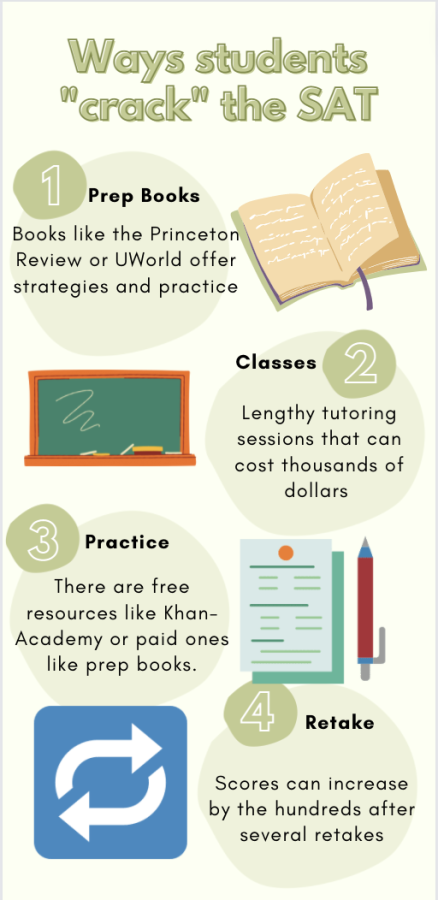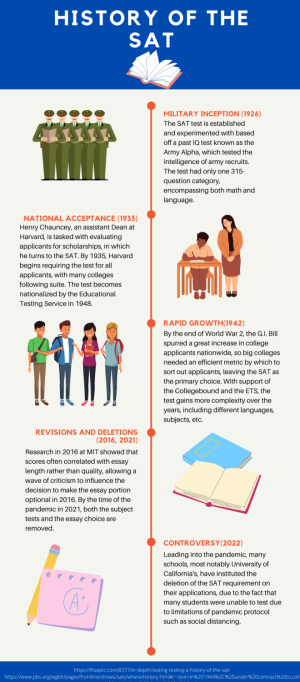No: Test-optional policies should stand
There are plenty of ways to score well on the SAT, most of which require extra money and resources.
May 9, 2022
Ever since the SAT was introduced in 1926, colleges have used it to determine students’ academic ability. In recent years, the importance of the test is waning and most colleges have gone test-optional or test blind. However, MIT recently announced its decision to reinstate the SAT requirement, an example that other colleges can follow. However, test-optional policies should stay.
The SAT has an awful reputation among high school students: its length is 3 hours, during which students have to maintain their focus to score well. The problems are boring and tedious – typical of that of a standardized test.
“I took [the SAT] at Amador, during the COVID year. Even when I had friends in the room, it was still a terrible experience. I don’t think anyone would perform well when you are stuck in a seat for multiple hours,” says Arthur Hua (‘22).
To do well on the test, most students have to take several practice tests as preparation. The practice is as painful as the real test: a student has to take a large chunk of their day and exhaust themselves, only to do it again if they are not confident in their performance.
“I wanted to [figuratively] die every single time I had to take [the SAT], ”said Sarah Zhang (‘23), who took the SAT last year.
The predictable format and topics of the SAT led to the rise of an entire industry of preparation, including tutoring classes and prep books.
“My parents didn’t trust me to take the SAT by myself, so they made me take a course and spent a bunch of money,” said Zhang.
With these resources and enough practice tests, most students can achieve their goal score. In addition, unsatisfied students can retake the test, and the average student who retakes the SAT receives a score boost of more than 100 points.
The thriving SAT preparation industry shows its success, thus how the SAT is coachable. The test measures how well a student can prepare for it, which admittedly can tie into work ethic, but not their overall intelligence or worth, because with the right resources and time, the SAT is doable for most students.
These resources also require immense amounts of money and extra time, which is why the SAT discriminates against low-income students whose families cannot afford summer tutoring sessions for thousands of dollars.
Test-optional admissions change everything — students are evaluated less on the number of resources they have to prepare for a test and more on everything else on their application.
“I think the [test optional policy] definitely saved me. When you remove a standardized test, you are forced to spend more energy assessing a student’s extracurriculars and reading through his essay. The SAT optional policy got me into the college I committed to, ” said Hua.





